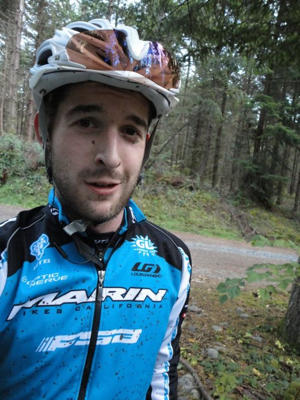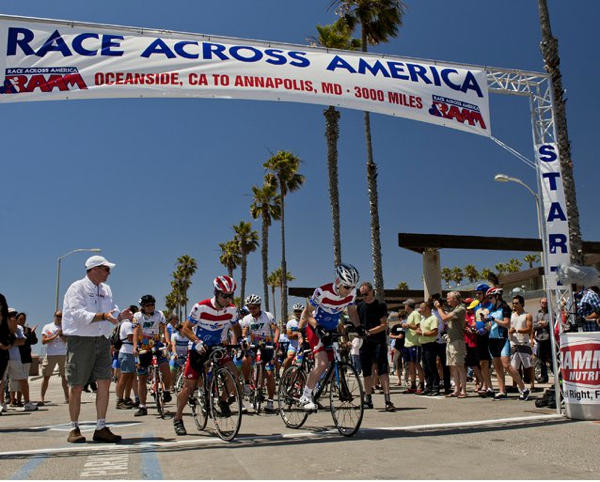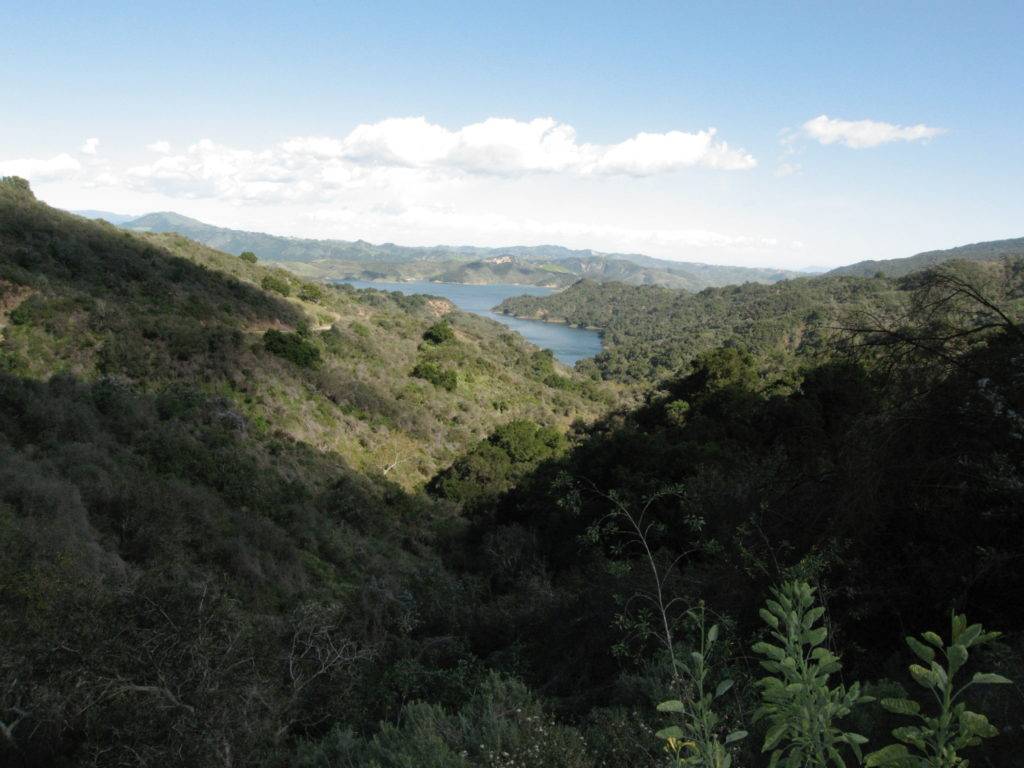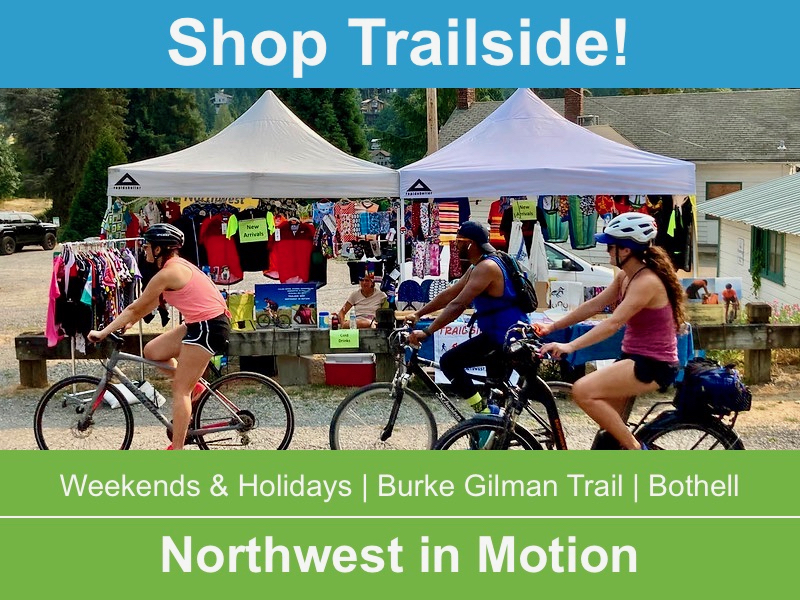Although it defies the logic the swirls around in my addled nervous system, the cool and rainy Pacific Northwest is home to some of the strongest endurance cyclists around. Brian Ecker and Chris Ragsdale have just received confirmation that they will be competing in the Furnace Creek 508 this Fall. The Seattle International Randonneurs is the largest club if its kind in North America, and the majority of them completed last year’s edition of the ~745 mile Paris-Brest-Paris.
Endurance events tend to favor older folks who seem to have a better ability to endure suffering than younger athletes, but this year we can look forward to following 21-year old Mike Gore compete in the 2-person category of the 2012 Race Across America (RAAM). Mike is already somewhat of a veteran, having crewed in 2010 and competed as part of a 4-person team in 2011. Mike’s approach to training and racing is similar to that of Ragsdale and Mick Walsh who adhere to a lower-tech philosophy.
If Mike’s story pique’s your interest…he’s looking for additional crew (email link below); and as Mike told me he doesn’t know which is more fun–crewing or racing.

Age: 21
Place of Birth: Seattle
School/major:
Western Washington University student studying Journalism and Public Relations
Work:
Social media guy for Marin Bikes; former sponsorship guy at nuun.
Are you involved in sport(s) other than endurance cycling? What do you like about it/them?
As a kid I played baseball, soccer, flag football, and I ran cross country in high school.
Now the only other thing I do is run – I got roped into a 12-hour trail race last Fall, though I haven’t run since then.
What bike(s) do you own:
Marin Stelvio with SRAM Red
Marin CXR carbon 29er
I occasionally ride Marin prototypes
You are quite young to compete in RAAM. How did you get involved and what is your motivation?
It’s a bit of a roundabout story – my best friend Sam has a rare disease called Friedreich’s Ataxia (FA) , and the leading nonprofit for FA (called Friedreich’s Ataxia Research Alliance) put together a team in 2010 for RAAM. I volunteered to wrench for them, and fell in love with the event – it’s truly an amazing experience. You can’t explain the bond that forms, as well as the crazy one-off experiences that come from traversing the country at 15 miles an hour.
In 2011, a friend of a friend on Facebook knew a guy who was on a team looking for another rider. Really, it was a ridiculous coincidence. I took the leap, they asked me to ride for them, and I became a part of Team Red, White and Blue (RWB).
My motivation is that it’s fun. What else could possibly convince a person to ride 3,000 miles?! Out on the road during the race, I find inspiration in the weirdest places – mostly from talking to myself like a crazy person, but it works.

How do you balance being a student and prepping for such a big event?
This coming quarter, I’m taking a lighter load of courses so that I have more time to ride and recover. It’s important to have time off the bike so that you don’t get burned out before 7 straight days of riding.
You will be riding for the RWB charity. Tell us about RWB and your RAAM teammate:
Team RWB is a great organization, and I’m really glad to be riding for them again this year. RWB is a non-profit organization dedicated to helping injured and troubled veterans of the wars in Afghanistan and Iraq through sport.
Now that the US is out of Iraq, it’s going to be important that people with PTSD and physical injuries get the care they need. Regardless of one’s political beliefs about the war, we have a collective responsibility to help out veterans.
Team RWB has three main pillars:
1. they partner veterans with civilians (called advocates)
2. use athletic events as goals, and
3. galvanize team spirit in communities
With some figures from the government saying that as many as 18 veterans commit suicide every day in the US, it’s important for returning vets to have meaningful connections once they return home. That really is a ridiculous number – 18 a day! That means that it is more dangerous for a veteran to be home alone than to be deployed to a combat zone. Even the most hardcore pacifist can agree that this isn’t right.
My RAAM team is a vet-civilian partnership. I’m partnered with (~32 year old) Jim Gourley. We are the RAAM fundraising representatives for RWB.
What is your training schedule like? Do you do anything in addition to cycling to prepare?
Racing RAAM is unique in that it doesn’t matter how much you train, it’s really a mind over matter type of thing. I do train to stay in shape and improve my condition, but I’m not soley focused on needing to ride huge miles in preparation.
People have finished RAAM on $1,000 bikes – I think that for this event, being a mental athlete is just as important as a physically fit athlete. You can’t really train for this in my opinion – either you can or can’t do it.
After RAAM last year, the only time I was on my bike was for the Rapha Gentlemen’s Race. I totally cracked in the heat and was super weak.
RAAM is a major undertaking. Tell us about your plans for the race—how many vehicles and crew?
We’ve got about 8 crew members right now – and are still looking for more. We need about 11 in order to complete the race safely. (Contact Mike about crewing.)
We’re using two minivans for rider transport, as well as an RV where the crew will cook and sleep.
What bikes and gear will you be using?
Marin Stelvio T3 with SRAM Red and a Semi-compact 36-52 crankset
I’m using Marin Bikes, and basically using a standard road bike with clip-on aerobars. It’s too rough to be on a TT bike for 12-20 hours at a time, and you’d waste a lot of time switching back and forth.
Reynolds attack/assault/strike wheels
Vittoria Open Corsa Evo CX tires (lots of them, thanks Vittoria)
Crank Brothers Candy pedals; It’s easier to get in and out of a multi-sided pedal—twisting out of other high-tension road pedals can stimulate cramping under endurance conditions.
Northwave Evolution shoes
Lazer Tardiz and Helium helmets
Interchangeable Optic Nerve eyewear – dark for sunny days, clear for night.
Nutrition: I’ll rely on GU products. I’m a part of their ‘test team,’ the group of crazy people responsible for the Roctane products. I’m using their high-calorie Roctane drink, plenty of gels for a pick-me-up, and other prototypes for hydration and nutrients.
FRS is supporting our RAAM team this year, so I’ve been training and racing with their products. The drink is going to be key as a healthy way to get antioxidants and some calories into my body.
We used Primal to make our team clothing this year, and I’m pretty pleased with our kit. However, this race ranges from -200 to 11,000 feet in elevation, and crosses just about every ecosystem the US has to offer in the range of a week. This means that I bring just about every piece of clothing with me – arm warmers, leg warmers, knee warmers, many types of gloves, hats, jackets, rain jackets, booties, and lots of Chamois Butt’r. I’ll end up taking about 10-12 pairs of shorts, 10 jerseys, and whatever other clothing I own.

What is your personal race plan?
So I’m shooting to be the youngest two-man RAAM winner, but we’ve got some stiff competition this year – Dave Preston and Kurt Searvogel have both put together teams in our division, so they’re our main targets.
I’m a tall, lanky guy. I’m 6’1” and 150 pounds, so the fuel I use is whatever has been in my stomach in the last 24 hours.
Being skinny and young is seen as a huge disadvantage by many – most of the guys winning RAAM are in their late 30’s or 40’s – there are even fast guys in their 50’s and 60’s who have a very good shot at winning.
However, what I lack in endurance against these old diesel engines, I make up for in recovery. I’m able to come back from a hard effort really fast, and can keep going on very little rest.
I don’t use a power meter, and haven’t bothered with VO2 max testing. Do you really need to know your VO2 max in the middle of the night in Kansas? I’ve actually stopped using basic heart rate tools for training also. Your heart rate gets so skewed after 5 straight days of riding that using it to measure effort isn’t accurate beyond about 12 hours of racing.
All the little things can burn energy, so my plan also includes focusing on all of the details that waste energy.
What is the race plan for Team RWB?
Our target finish time is under 7 to 7.5 days, which would top 3 and be really fast for a 2-man team.
We have a very detailed race plan for how exactly we’re going to do that in which we’ve looked at the strengths and weaknesses of my partner (Jim) and I. We plan to take 40-50 mile pulls, and each day each person will do 1 section of 80-90 miles so the other rider can take a longer rest.
Even though we’ve got it down mile-by-mile, RAAM is ridiculous, so we’ve got to be flexible and willing to help each other out.
How do you plan to use your previous experience in this year’s attempt?
Pacing is key – you can’t burn yourself early, but you can’t just plug along at a snails pace. Also, having done it twice, I’ve made some of the wrong turns twice – both on the bike and as a crewmember. There is some benefit to knowing many of the tricky parts of the course, or knowing what to expect in terms of road, traffic, and weather conditions.
Having crewed, I know the mental strain and exhaustion that comes with crewing, and I feel that this helped me work with the crew in a positive way.
What does your family think of your RAAM aspirations?
My parents are happy that I’d doing it – I’ve managed to keep my grades up, and it’s a cool thing to be doing.
RAAM is a bit dangerous – riding 24 hours a day on crazy roads, but lots of precautions are taken so it’s not too bad.
You have been actively getting sponsors on board with your attempt. Who do you have lined up and what kinds of support are you getting from each?
Sure – I’m a bit of a sponsorship nerd, as I’m currently managing the Marin team, and used to work at nuun in Seattle doing sponsorship-related stuff. I wrote a 6-part series that anyone can read if they want a whole lot more detail.
It’s tough to get sponsors for a race like RAAM, and here’s why:
It’s something that requires a massive amount of training and preparation, but is then over in a week. The toll (and monetary cost) of the race means that it really is the only big race you can plan on all year, so you really have to make it count.
So, the whole thing is a lot different than a road team that will be at up to 100 events a year.
Luckily, we’ve got some industry partners of Team RWB onboard: Honey Stinger being one of them. FRS is also onboard, and Marin is taking care of us with bikes.
Do you have any longer-term goals for cycling in general and endurance cycling in particular?
I want to do Race Across Oregon (RAO) at some point in the future, but the cost is a bit prohibitive for a student.
I also recently watched a film about Tour Divide and want to do that – it looks like much more chill RAAM, though on a mountain bike.
What’s your favorite non-racing ride in the Puget Sound?
I’ll always love riding Mercer island – the fast, banked roads and variety of terrain makes for a fast, fun ride without any stoplights.
I live up in Bellingham for school now, and I love going out with a pocket full of gels and just riding on wherever the roads go – sometimes down to Mount Vernon, sometimes up to Canada.
Do you have any advice for other 20-somethings thinking about getting serious about cycling or endurance racing?
Only do it if you really like it – It’s a lot more expensive than road or MTB racing, but money won’t buy you any advantage.
People who win RAAM solo are very unique individuals. Many of them weren’t the fastest athletes, but had an aptitude for suffering.


